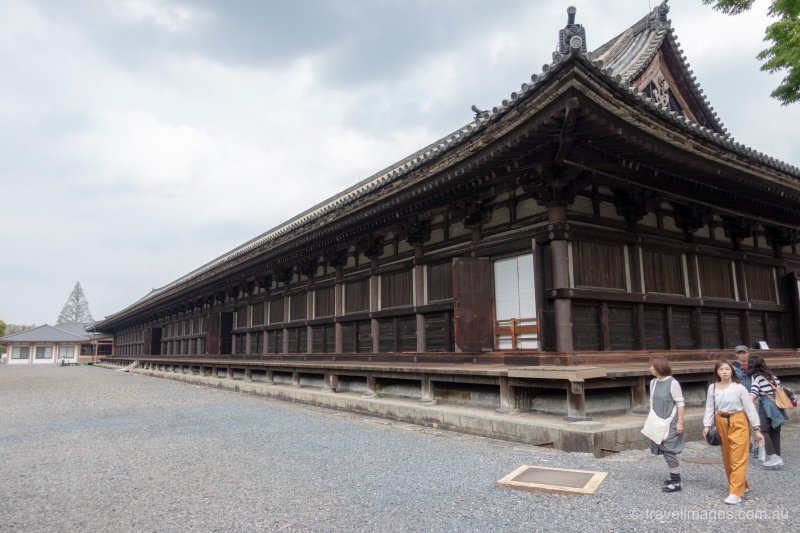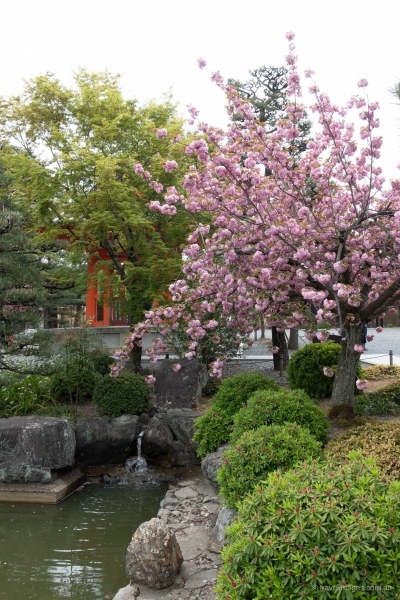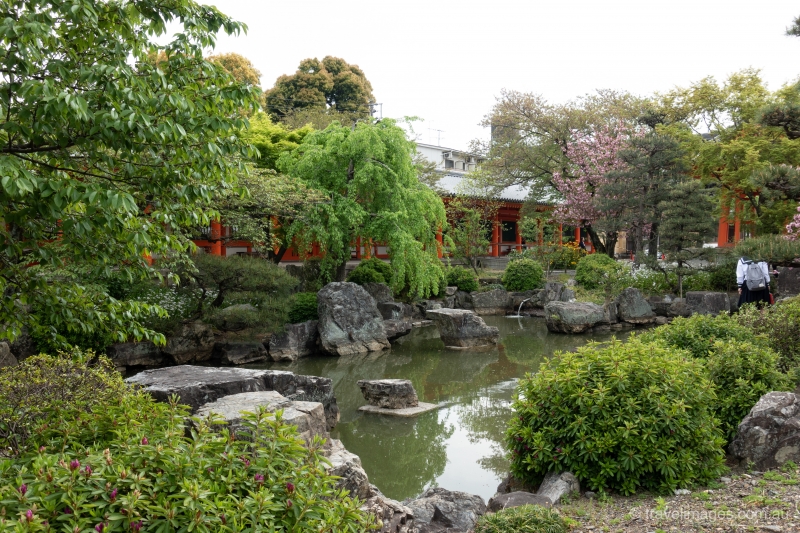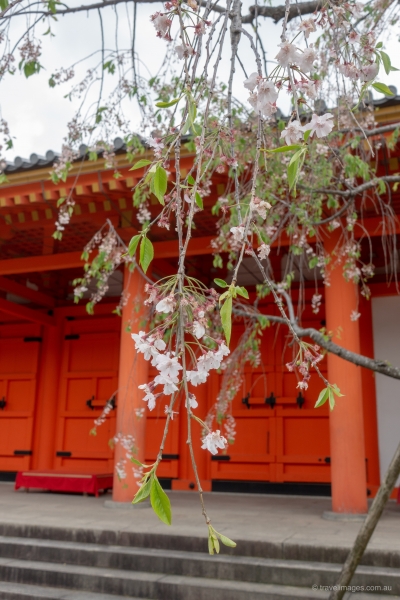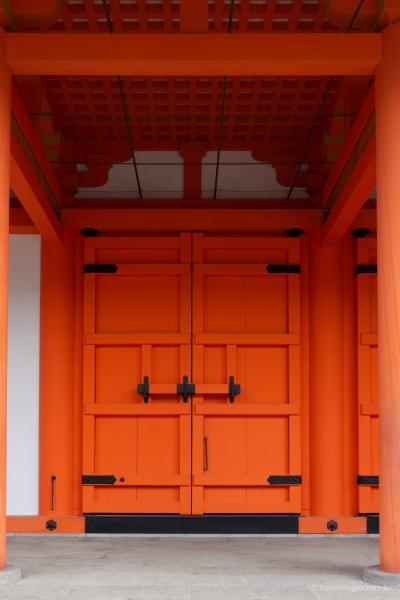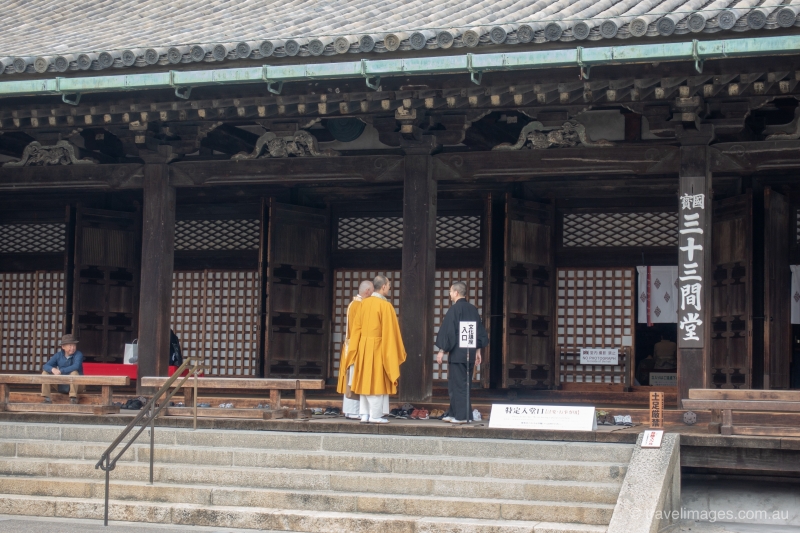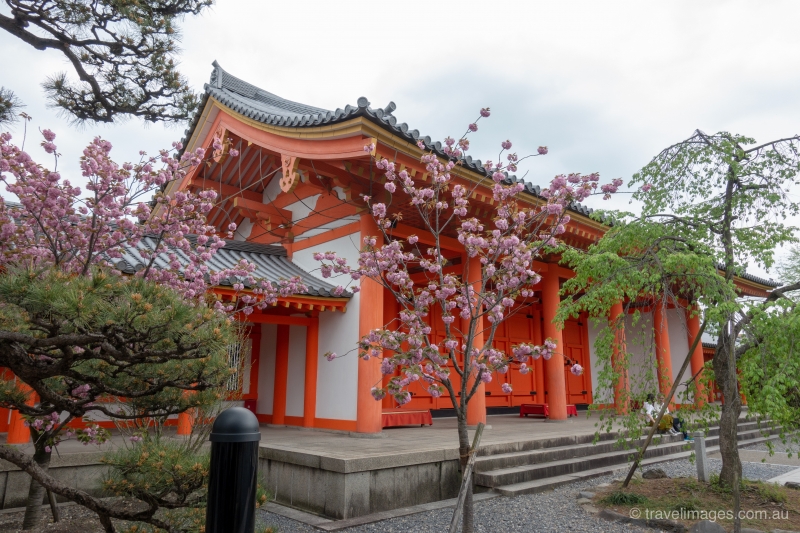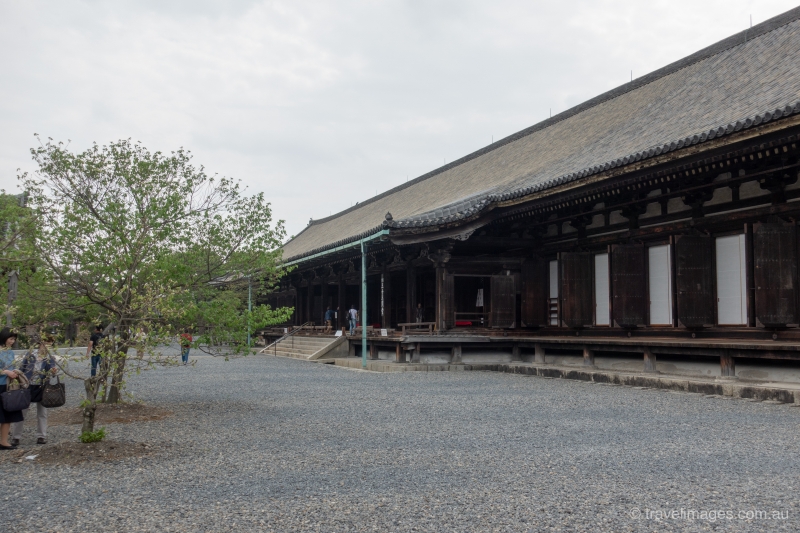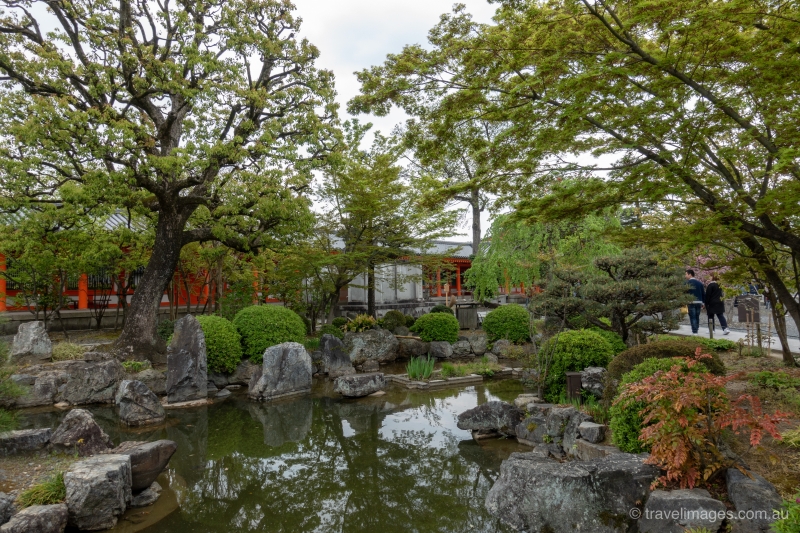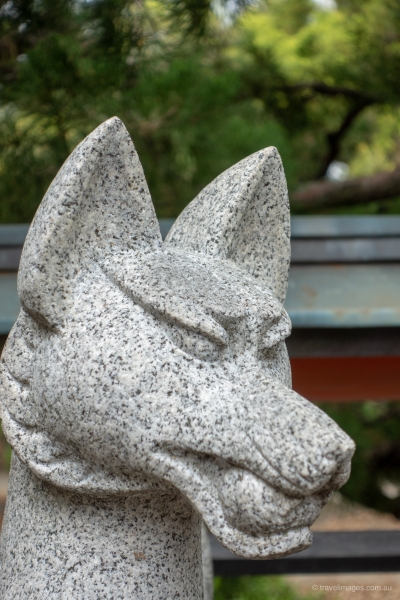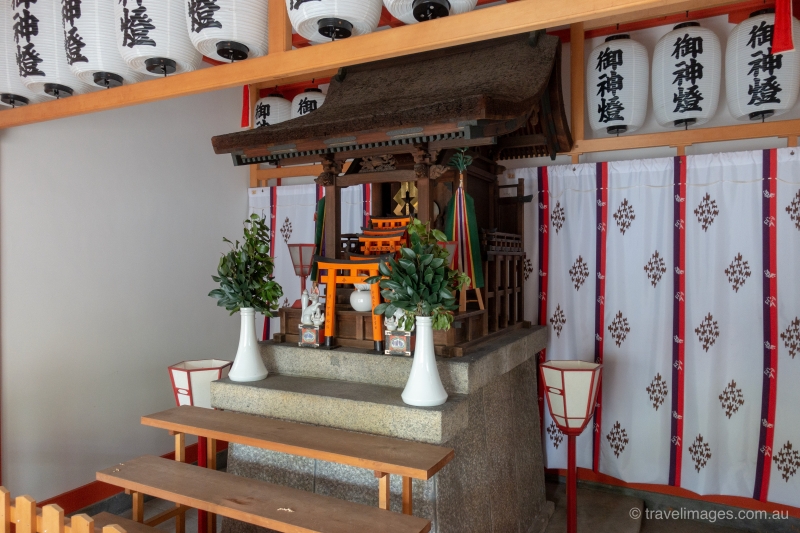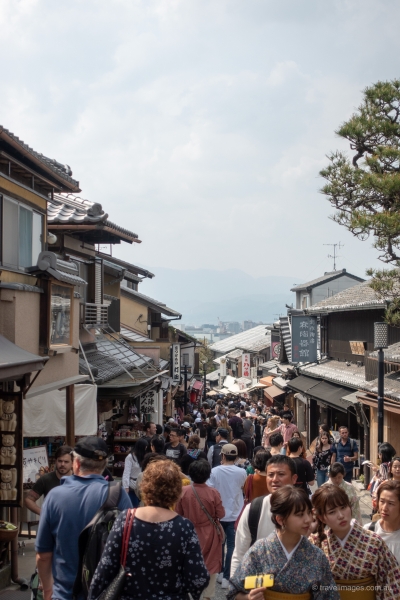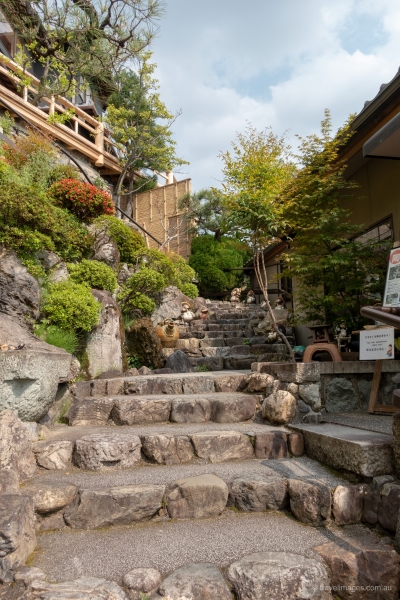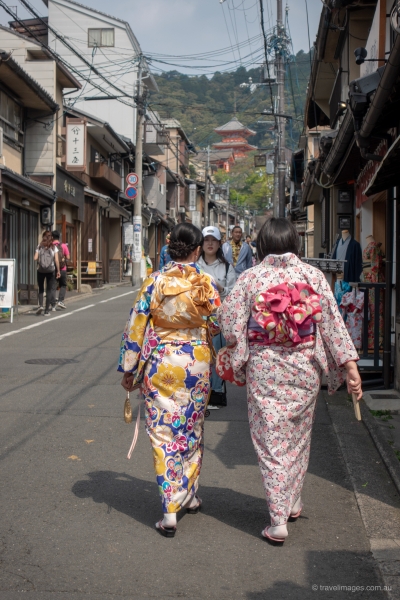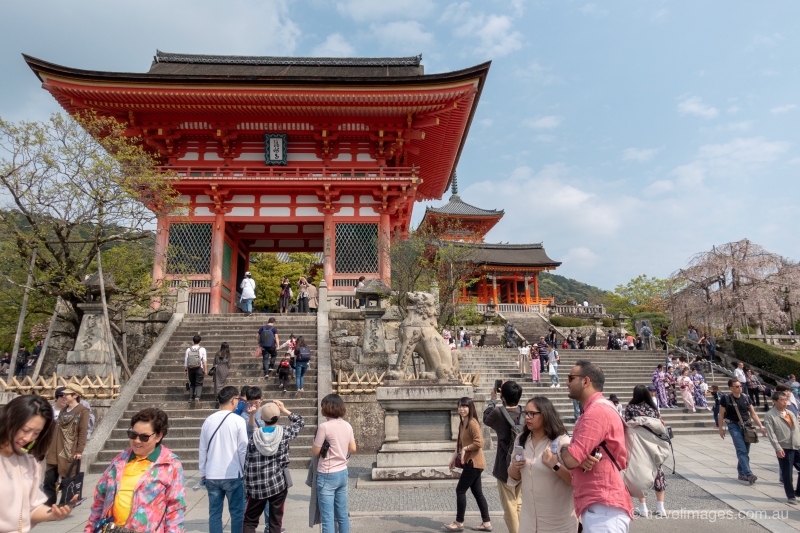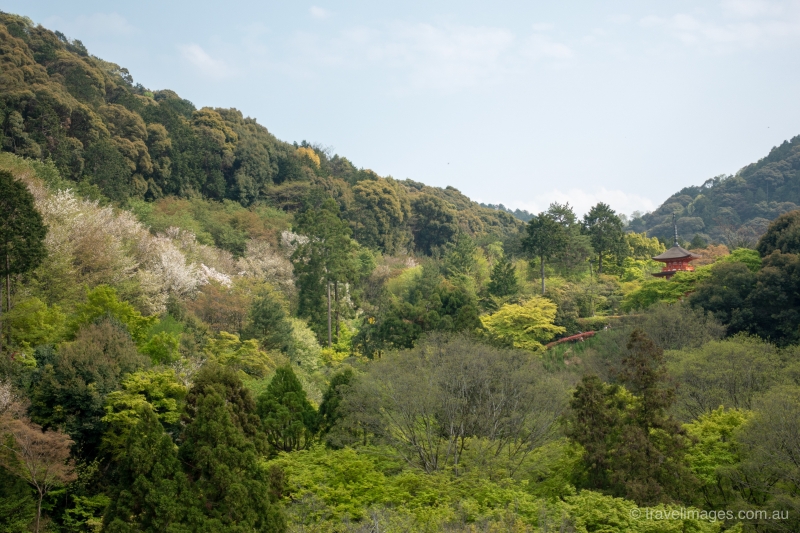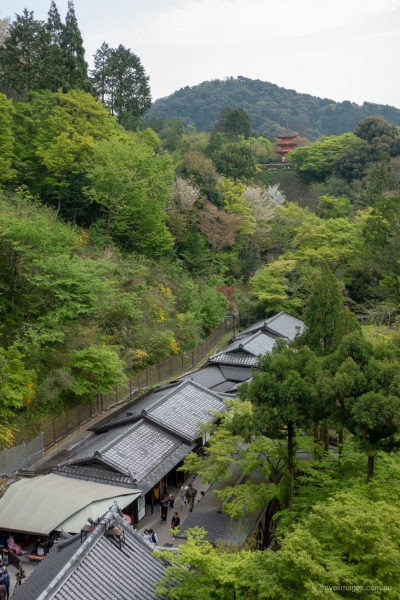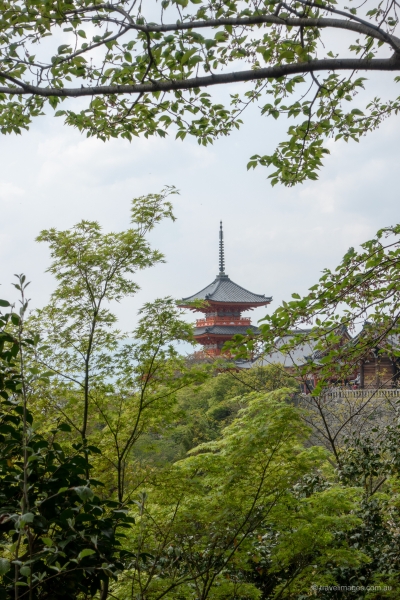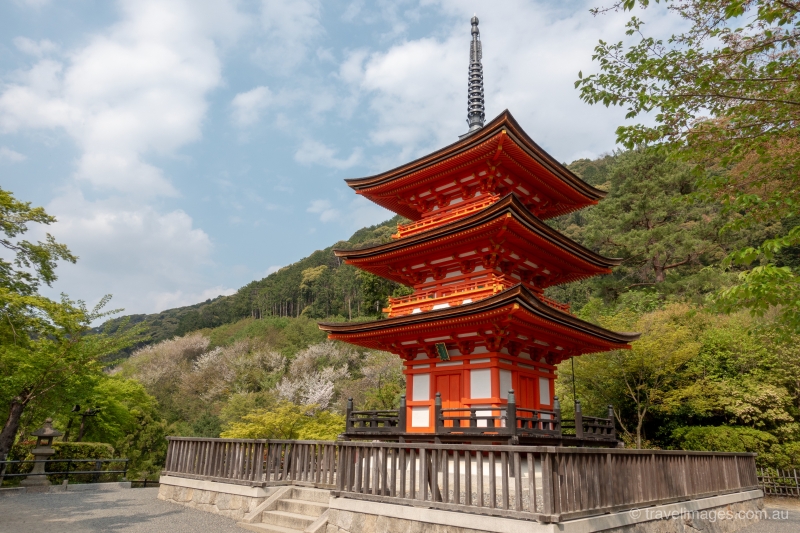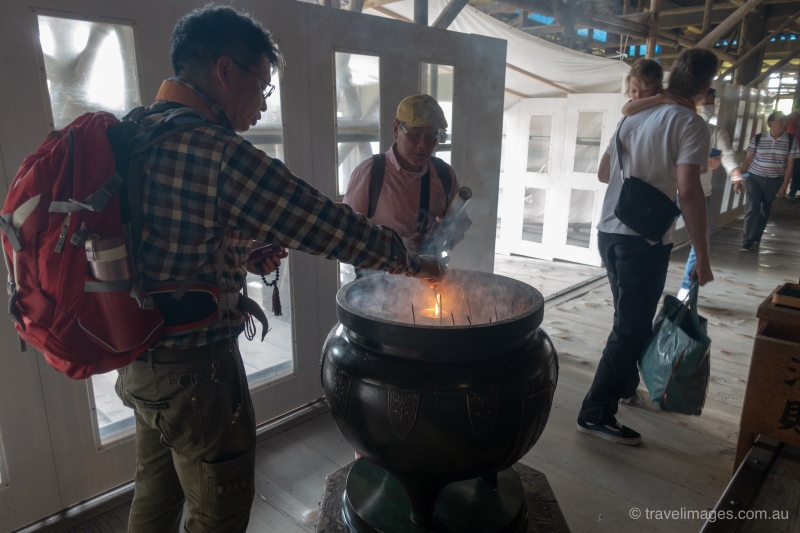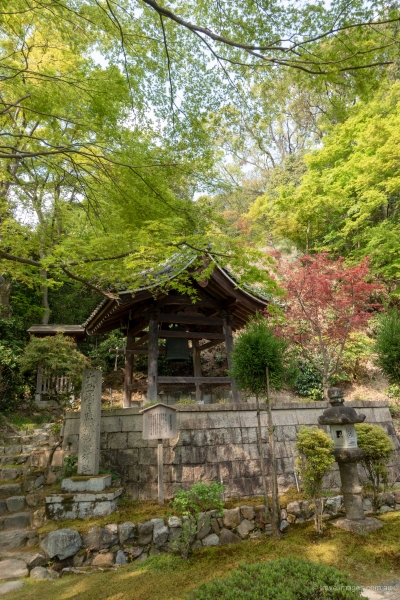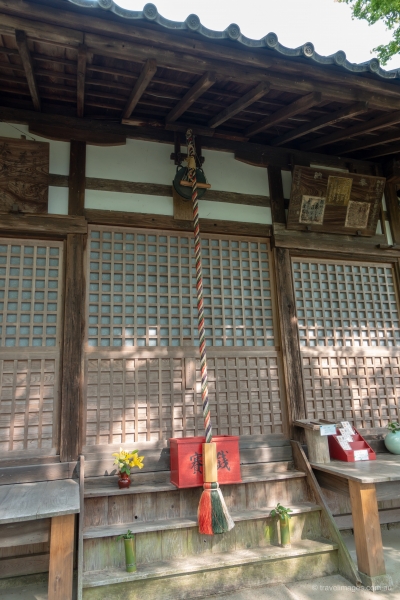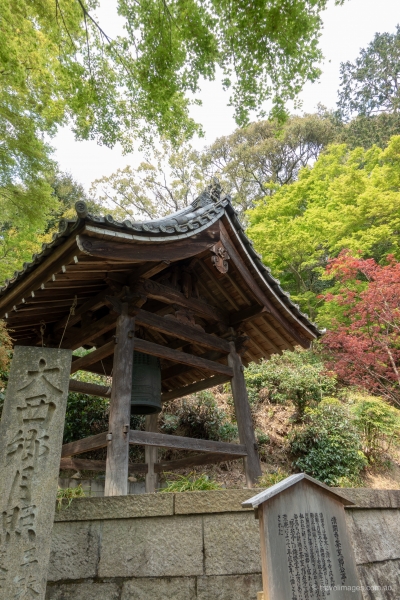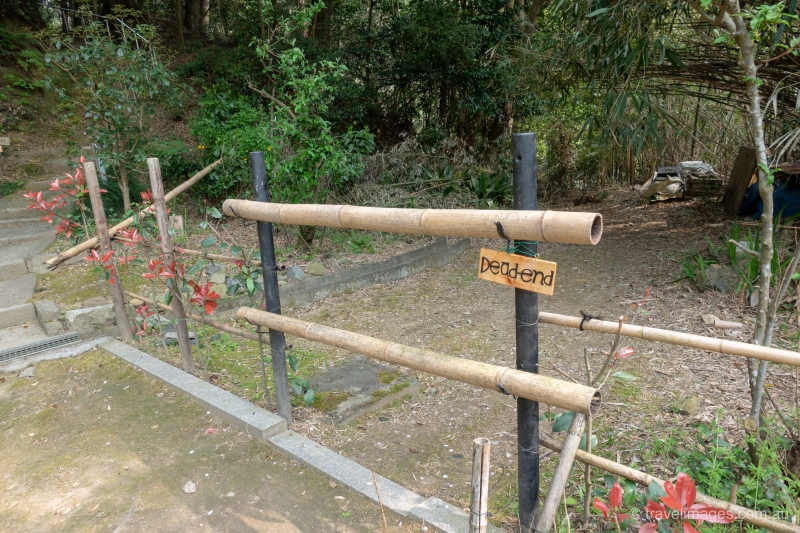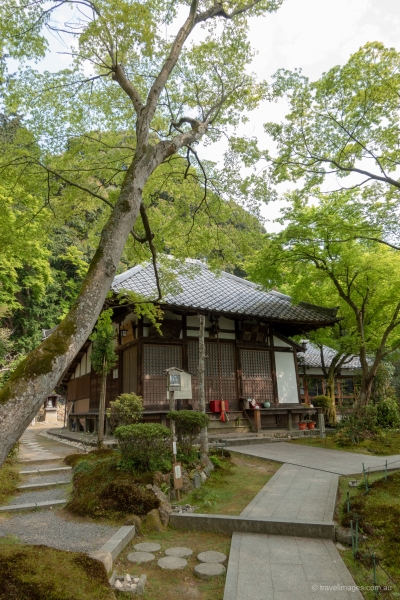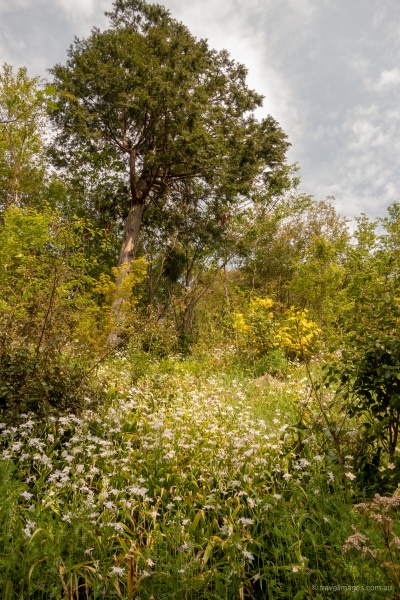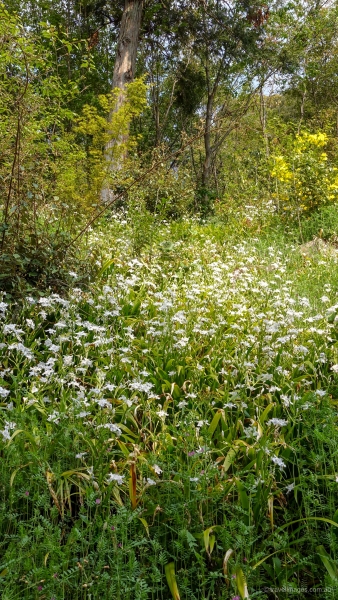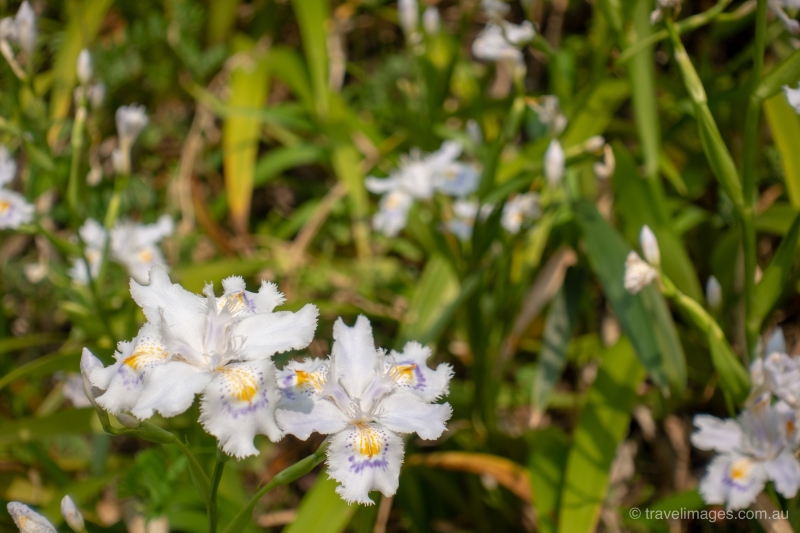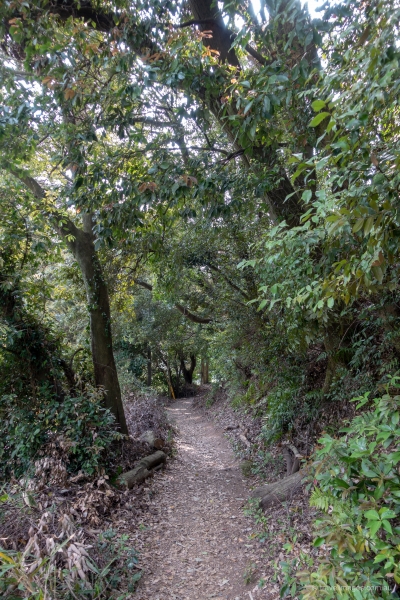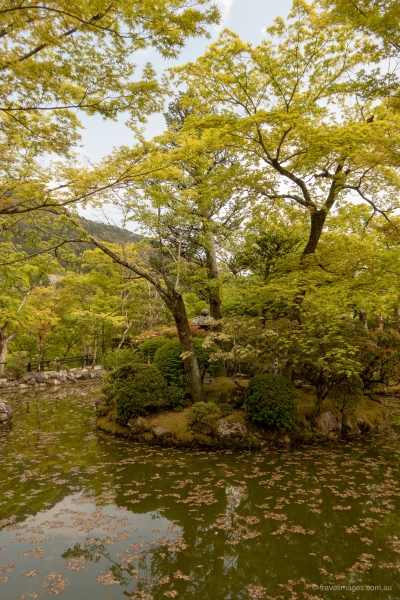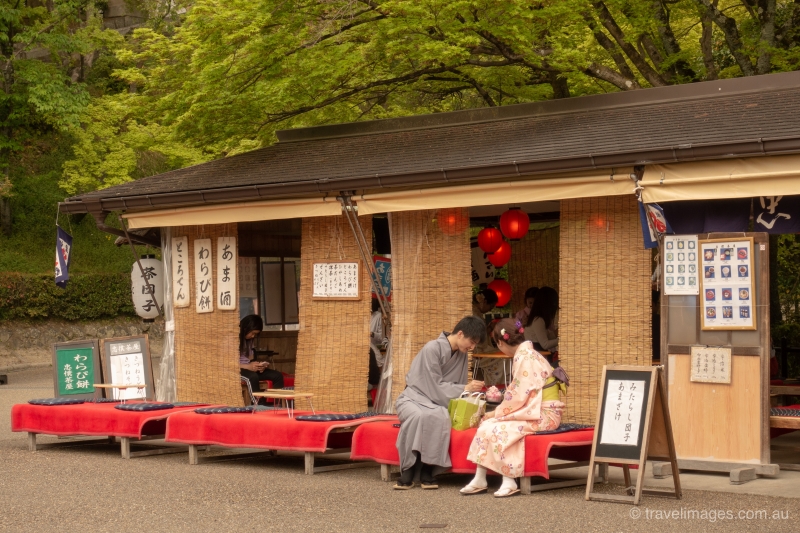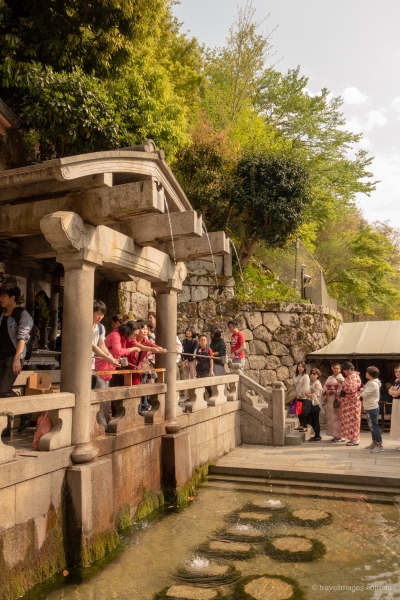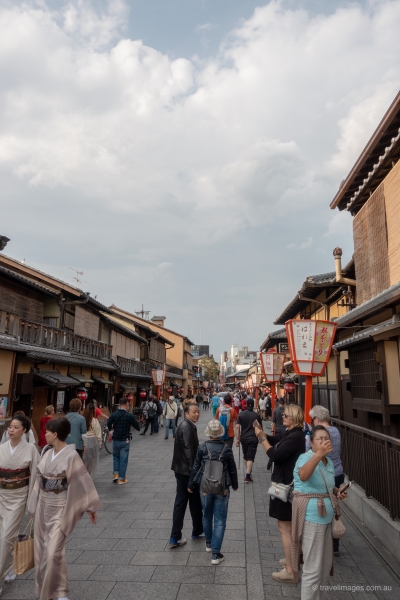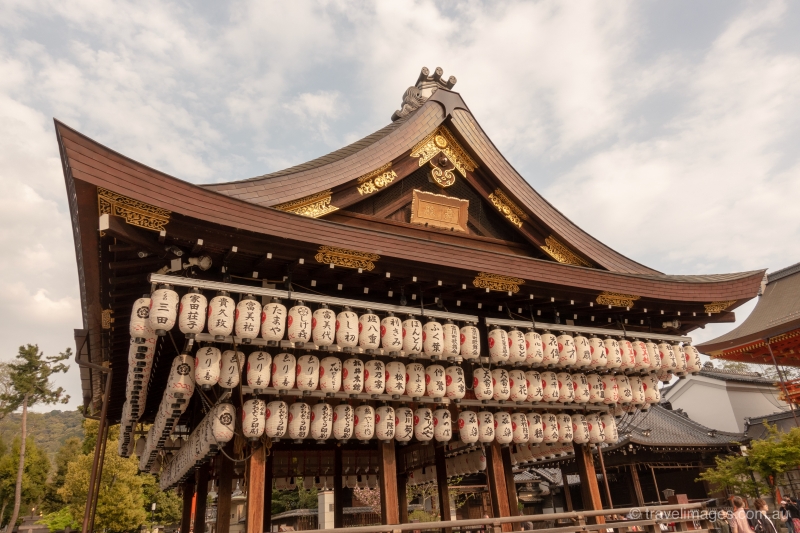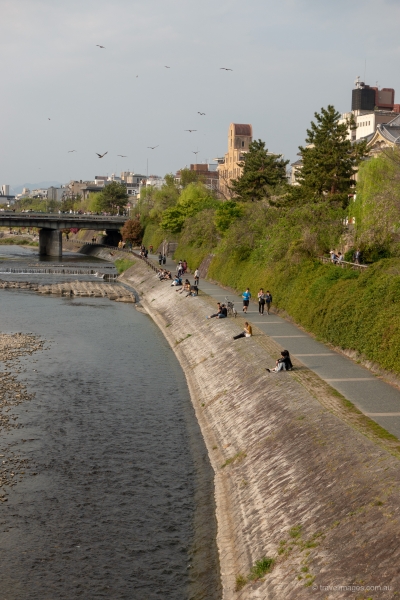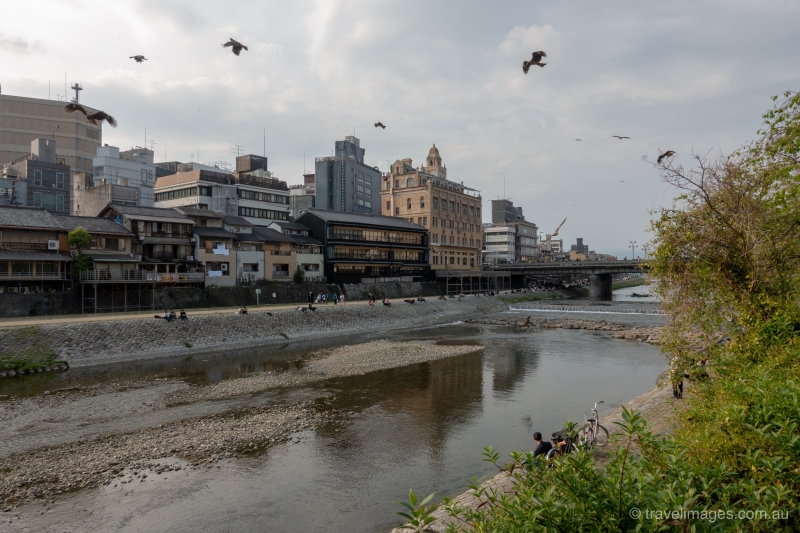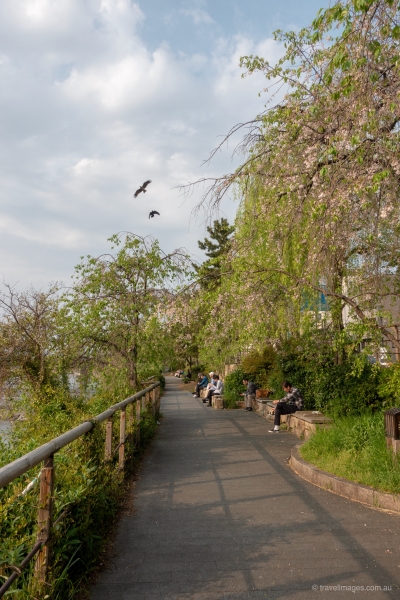With no fixed plans for the next 5 days, and a sense that if I head to Kawaguichiko today it will be phenomenally busy, I settle on a day trip to Kyoto. Or a half day really if you discount the 2 and a half hours it takes to get there by Shinkansen from Shinagawa.
The ticket agent at Shinagawa station initially tells me that the 9:10 Hikari Shinkansen to Kyoto is fully booked, as is the one after it. After I ask about the 10:10 service something occurs to him and he miraculously finds a window seat on the 9:10. Okay then. Much to my horror, I’m in such a rush to catch the train that my only option for food and coffee past the north gate entry of the Shinkansen turnstiles is Starbucks. The cappuccino was drinkable, and the cinnamon scroll and root vegetable and chicken half wrap will tide me over until Kyoto.
The reserved seating carriages on the Shinkansen are not full leaving Shinagawa, but progressively fills as we stop at a few stations along the way. A tour group, Korean I think, board the train at Shin-Yokohama, with far too much luggage for the available space, and depart the train with me at Kyoto. I have no plans for Kyoto, other than to start with a walk laid out by @2aussietravellers that I came across on Pinterest. It is a walk around the east part of Kyoto, starting from Kyoto station.
It’s a humid 25 degrees and overcast in Kyoto on arrival, with a layer of smog that becomes apparent as I head east from the station, across the Kamogawa River, which is flowing, but very low in what appears to be a river fed by seasonal snowmelt. I’m heading to my first stop on the @2aussietravellers itinerary, which is Sanjusangendo Temple. I know nothing about this temple before I arrive at it’s orange and yellow trimmed entry, but it turns out to be a stunning temple with a small traditional garden with some more late-blooming cherry blossom.
It’s 12:30pm and whilst there are some people arriving and departing, it seems quite quiet given the ample bus parking in the carpark. Entry is 600 yen, with no queues when I arrive. The gardens are small and lovely, with two small ponds, and the temple is a revelation. The largest surviving wooden hall in Japan, it is 850 years old. To enter the temple, it’s off with the shoes and then store them in the area provided. It’s a short indoor walk up to the internal entrance of the temple. Photography of any kind is strictly forbidden, and there are signs everywhere to expect all of your cameras to be inspected on exiting the temple. There are a limited number of photos of the amazing wooden statues on the temple’s website.
Sanjusangen-do is a designated ‘national treasure’ of Japan, and rightly so. Inside the template are 1001 jaw-dropping statues of the Buddhist deity known as “Kannon”, carved from wood, lacquered and then painted with gold leaf. Until I read the description of how they were made, I would have said that they were bronze or brass castings. At first glance, all of the life-size statues look the same, but closer inspection shows that the robes are slightly different, some of the statues have slightly open eyes and others have their eyes closed, reflecting the 70 artisans that created them. Halfway down the temple is an enormous seated statue of the Buddhist deity Kannon, and there are a further 28 guardian deities that protect the Kannon at regular intervals along the massive hall. The fire risk must be enormous in this wood structure with 1001 wooden statues, and there are fire extinguishers at regular intervals as well. It doesn’t stop the burning of incense or paid ‘offerings’ to the deities, which are burnt. A very impressive temple indeed and well worth the price of admission.
Tucked away in a corner of the grounds is an Inari Shrine, which apparently brings good fortune to those that contribute to the wishing well in the shrine.
A couple of tour buses have arrived as I’m leaving, so I must have timed this visit well.
The walk continues from the temple past the interesting mix of Victorian English and modern Japanese architecture that is the Kyoto National Museum, and heads for the Kiyomizu Temple, which is perched on the side of the hill further east of my current location. It’s a steepish climb up a narrow set of streets, and heavily touristed in a similar way to walking up the hill to Sacre Coeur in Paris. Something to experience once and avoid doing it again. I miss the main narrow and crowded Matsubara-Dori street by heading up the hill two streets before and finding a winding set of steps leading up to Matsubara-Dori through a complex of tea rooms and pottery shop. Unless you like crowds and shops selling tourist tat at tourist prices, Matsubara-Dori street is to be avoided or traversed as quickly as possible.
At the top of the street, the Kiyomizu temple complex begins, and it is an extensive area to cover. The main temple is under renovation, but worth the 400 yen entry fee simply for the views south down the valley, where a smaller temple that is part of the same complex is visible. It must be spectacular in full cherry blossom season or covered with snow. There is a pathway between the main temple and the one I can see in the distance, and the number of tourists thins out considerably along the way.
There is a third temple called Seikanji Temple, a longish walk from the second temple. By the time I walk there through a pretty woodland path, it is down to three visitors, including me. This tiny temple is the highlight of the visit – quiet, green, and the ‘dead-end’ sign burnt into the wood shows some humour in dealing with gaijin visitors.
The small Seikanji Temple is notable as the entrance to the burial place of the 12th century Emperor Takakura who died at 21 of a broken heart. His mausoleum is out of sight in the woods behind the temple, and not open to the public.
The view across Kyoto from here on a clear day must be spectacular, but today the Kyoto Sky Tower can barely be seen for smog.
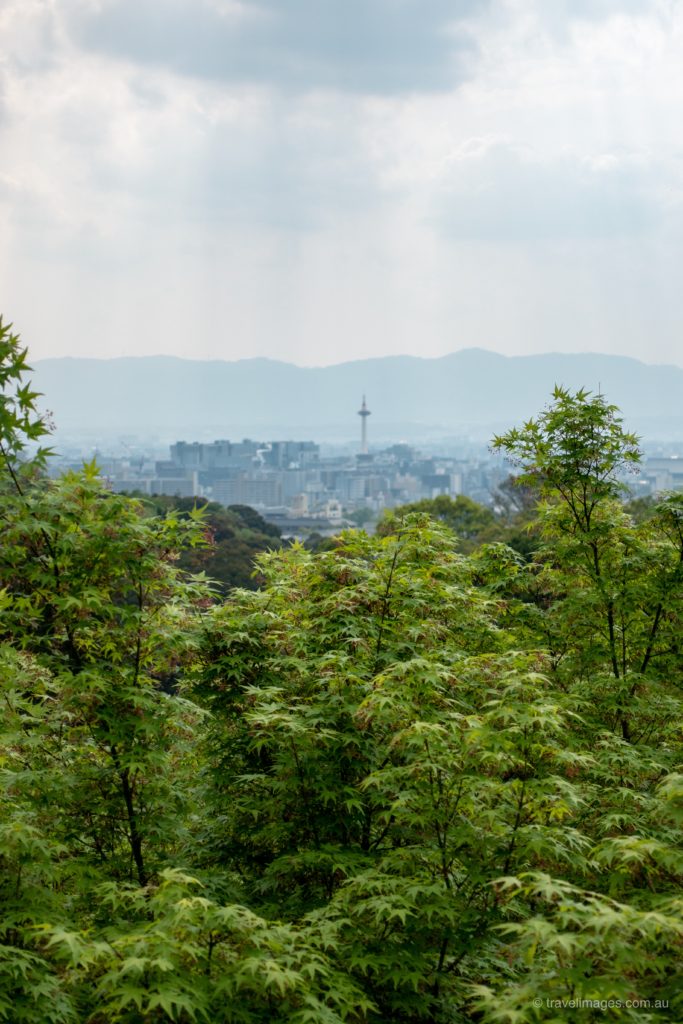
There is an exit from Seikanji Temple into a small carpark and main road here, otherwise it’s back to the main temple to exit along a quiet forest path that opens out into a hillside carpeted with tiny irises.
There are tea rooms on the exit path at the main temple, along with a shrine of some type with tourists gathering the water in long-handled cups and washing their hands. To the side of one of the team rooms is a quiet pond with some shade. There are also a surprising number of young women in groups in kimonos, some evidently not of Japanese heritage, and some young couples in traditional dress. It is not until I arrive back at Higashioji-dori Street and see the first of many ‘Rental Kimono’ shops that I realise that dressing up is a ‘thing’.
Next stop on the itinerary is Yasaka-jinja Shrine, where I have a quick look around the entrance and decide I’ve had enough shrines for the day, and head back towards the Kamogawa River, finding myself stuck in a busy touristy street called Hanamikoji-dori street, and then in Shijo-dori street, which is even more touristy and busier.
This street does lead me back to the river though, which has people dotted along the banks, enjoying the warm Sunday afternoon. A large gathering of black kites are behaving like seagulls whirling and diving for food, and practicing their prey snatching skills on the surface of the river. There is also a fascinating building that looks transplanted straight from Jaipur in India on the corner, which turns out to be an upmarket, multi-level Chinese restaurant. It can’t always have been a Chinese restaurant, but I can’t find any information on its history. Based on the number of gambling dens I’ve seen in Kyoto so far, I’d bet good money there’s one hiding in that building as well.
I’ve covered a lot of ground so far, and it’s a longish walk back to Kyoto station from where I am. The Kyoto Sky Tower is my navigation point, for what will end up being a 180 degree loop from my starting point at the station to when I arrive back.
It’s a busy time at the JR ticket office, and I learn a few things along the way here. The ticket office is at first glance separated into 2 sections – one for passengers who need English-speaking ticket agents, and another section for locals wanting tickets and seat reservations. The ‘English’ line takes 35 minutes for a fairly short line as it is serving people collecting their rail passes. There is a sign on the wall that advises that if the line for the English speaking agents is too long, get in the line for the local ticket agents if you just need tickets. I should have gotten into this line as although it was a much longer line, it was been serviced by 5 agents versus the two in the English line.
After I’ve gotten my seat reservations back to Tokyo and passed through the Shinkansen station barriers, I discover a one-man booth whose sole purchase is to sell seat reservations for ‘today’s trains’. No queue whatsoever. I’ll keep an eye out for these booths at other stations as the slow moving queues are getting tiresome.
A little less exercise today with 27,425 steps and 19.49km walked, active for 375 minutes, 74 floors (all those temple steps rather than train station steps today) and 4,132 calories burnt. Which still seems on the high side, and I see another discrepancy between my Fitbit and My Fitness Pal, so synchronisation between these three apps seems to be problematic, and I think the common denominator is the Map My Walk app.

